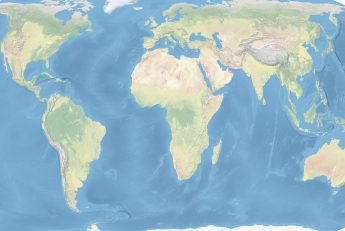 Understanding how biodiversity responds to ecosystem change is critical for effective conservation. From the behaviour and dynamics of individuals and populations to the global distribution and extinction risk of species, our research focuses on the challenges of monitoring biodiversity across these different scales.
Understanding how biodiversity responds to ecosystem change is critical for effective conservation. From the behaviour and dynamics of individuals and populations to the global distribution and extinction risk of species, our research focuses on the challenges of monitoring biodiversity across these different scales.
 Monday 14th November DAVID JACOBY @DJacoby_Marine
Monday 14th November DAVID JACOBY @DJacoby_Marine
My research seeks to use electronic tracking devices and network analyses of animal movements to understand connectivity and grouping behaviour in ecological communities. I’m interested in how aggregation, collective movement and social interactions can fundamentally impact the persistence and vulnerability of a species, helping us to mitigate against threats. Most of my research is within the marine environment where I study the dynamics and drivers of social networks in apex marine predators such as sharks. I also have a soft spot for freshwater eels.
 Tuesday 15th November THE LIVING PLANET INDEX @LPI_Science
Tuesday 15th November THE LIVING PLANET INDEX @LPI_Science
The Living Planet Index (LPI) is a measure of the state of global biodiversity based on population trends of vertebrates from around the world. The Living Planet Database (LPD ) currently holds over 18,000 population time-series for more than 3,600 mammal, bird, fish, reptile and amphibian species. A small team of four is currently working on the upkeep and updates of the database and on all related analyses. The latest Living Planet Report was released at the end of October with new LPI results showing there has been an average decline of 58% in vertebrate populations between 1970 and 2012. Follow our Biotweeps takeover for an in-depth look at the report and updates on the rest of our work.
 Wednesday 16th November ROBIN FREEMAN @Robin_Freeman
Wednesday 16th November ROBIN FREEMAN @Robin_Freeman
I’m the Head of the Indicators and Assessments Unit. My research spans many disciplines from understanding the status and trends of global biodiversity, the creation of new kinds of technology for monitoring and tracking animals in the wild, to remote fieldwork utilising those technologies and new methods for analysing and interpreting the data we are now able to collect.
 Thursday 17th November NATIONAL RED LIST @NationalRedList
Thursday 17th November NATIONAL RED LIST @NationalRedList
The National Red List Project collates the conservation status of species across a large number of taxonomic groups, much like the internationally recognised IUCN Red List, but on a regional or national scale. This means that the red lists can be readily incorporated into national biodiversity strategies and action plans and can inform local or national conservation, development and planning processes. Here in Indicators & Assessments, 220,411 species assessments from 161 countries and regions worldwide have been uploaded to our database. We recently received a huge influx of red lists to be processed, which will keep our team of four quite busy for a while!
 Friday 18th November MONIKA BOHM @MonniKaboom
Friday 18th November MONIKA BOHM @MonniKaboom
I am primarily researching how we can use extinction risk as an indicator of species’ status and trends over time – which means I get to work with the IUCN Red List and on a large number of different species groups. My personal favourites: reptiles, freshwater molluscs, butterflies and dung beetles! I am also interested in climate change vulnerability of species, biodiversity monitoring in general, capacity building for conservation and science communication & public outreach. Expect a mixture of all of the above during my Biotweeps takeover!
 Saturday 19th November PIERO VISCONTI @pvisconbio
Saturday 19th November PIERO VISCONTI @pvisconbio
My research focus is in predicting future distribution, population trends and extinction risk of terrestrial vertebrates under future global change scenarios. I am also interested in understanding early warning signals of changes in ecosystem function. Expect lots of tweets talking about the future!
